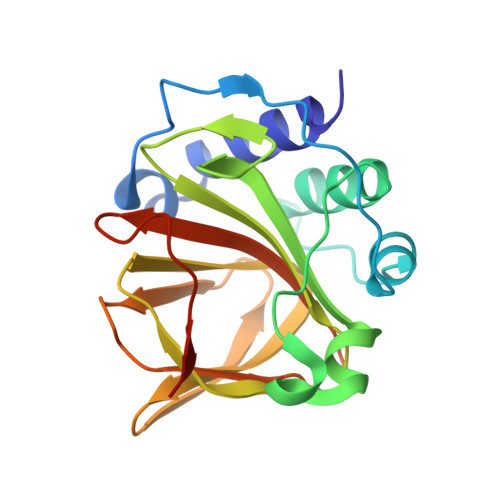Molecular insight into bacterial cleavage of oceanic dimethylsulfoniopropionate into dimethyl sulfide
Li, C., Wei, T., Zhang, S., Chen, X., Gao, X., Wang, P., Xie, B., Su, H., Qin, Q., Zhang, X., Yu, J., Zhang, H., Zhou, B., Yang, G., Zhang, Y.(2014) Proc Natl Acad Sci U S A 111: 1026-1031
- PubMed: 24395783
- DOI: https://doi.org/10.1073/pnas.1312354111
- Primary Citation of Related Structures:
4LA2, 4LA3 - PubMed Abstract:
The microbial cleavage of dimethylsulfoniopropionate (DMSP) generates volatile DMS through the action of DMSP lyases and is important in the global sulfur and carbon cycles. When released into the atmosphere from the oceans, DMS is oxidized, forming cloud condensation nuclei that may influence weather and climate. Six different DMSP lyase genes are found in taxonomically diverse microorganisms, and dddQ is among the most abundant in marine metagenomes. Here, we examine the molecular mechanism of DMSP cleavage by the DMSP lyase, DddQ, from Ruegeria lacuscaerulensis ITI_1157. The structures of DddQ bound to an inhibitory molecule 2-(N-morpholino)ethanesulfonic acid and of DddQ inactivated by a Tyr131Ala mutation and bound to DMSP were solved. DddQ adopts a β-barrel fold structure and contains a Zn(2+) ion and six highly conserved hydrophilic residues (Tyr120, His123, His125, Glu129, Tyr131, and His163) in the active site. Mutational and biochemical analyses indicate that these hydrophilic residues are essential to catalysis. In particular, Tyr131 undergoes a conformational change during catalysis, acting as a base to initiate the β-elimination reaction in DMSP lysis. Moreover, structural analyses and molecular dynamics simulations indicate that two loops over the substrate-binding pocket of DddQ can alternate between "open" and "closed" states, serving as a gate for DMSP entry. We also propose a molecular mechanism for DMS production through DMSP cleavage. Our study provides important insight into the mechanism involved in the conversion of DMSP into DMS, which should lead to a better understanding of this globally important biogeochemical reaction.
Organizational Affiliation:
State Key Laboratory of Microbial Technology and Marine Biotechnology Research Center, Shandong University, Jinan 250100, China.
















